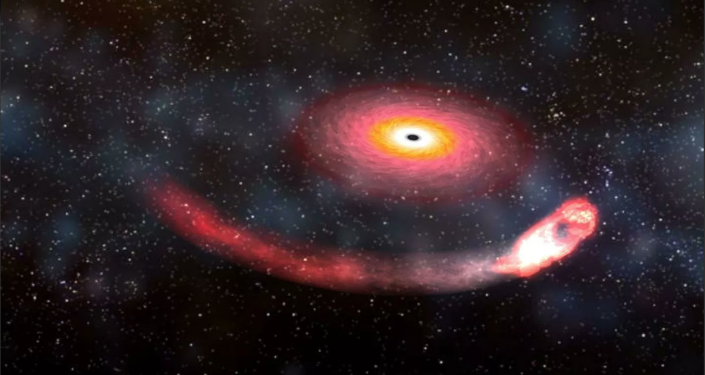The black hole ‘devours’ a star and produces a rare and fleeting phenomenon (photo)
3 min read
The chaos caused by the confrontation between a black hole and a star has created a rare phenomenon.
By measuring X-rays when the star was torn apart by gravity, astronomers have identified something difficult to detect: a medium-weight, medium-mass black hole, reach o Science alert portal.
Scientists believe that black holes Intermediate mass (IMBH) may be very common, but for some reason they’ve proven to be adept at “escape” from telescopes, so this discovery is unprecedented, which could help the scientific community unravel the mystery of how supermassive black holes grow so massive.
“The fact that we were able to capture this black hole while it was devouring a star provides us with a wonderful opportunity to observe what would otherwise be invisible. […] Moreover, by analyzing the flames, we were able to understand this transient class of black holes that may well represent the majority of black holes in the centers of galaxies,” said astronomer Anne Zablodoff, from the University of Arizona, USA.
While the boundary between IMBHs and supermassive black holes (SMBHs) is not currently well defined, the boundary of intermediate mass is generally considered larger than a collapsing star or stellar black hole (one hundredth of the solar masses). ), but it is not supermassive (with a mass between one million and one billion times that of a typical stellar black hole).
Black holes, usually invisible, reveal themselves when something bright, such as a star, gets a little close. So, the massive force of a black hole – that is, the product of its gravitational field – extends first and then later “pull” the star With tremendous force, which ends with tearing apart the glowing celestial body, explains Science Alert.
Image of the 6dFGS galaxy gJ215022.2-055059 taken by NASA’s Hubble Space Telescope in collaboration with NASA’s Chandra X-ray Observatory. This is an extremely rare and elusive cosmic phenomenon: a black hole “swallows” a nearby star
This explosion event (TDE) releases a bright flame as debris from the disintegrating star gradually disappears beyond the black hole’s horizon.
An event of this type, called 3XMM J215022.4-055108 (or simply J2150), was observed in 2003 in the center of a star cluster on the periphery of a galaxy, 740 million light-years from Earth. Over the course of 10 years, the bright glow faded, providing a complete set of event data. Photon analysis suggested the presence of IMBH.
A new team led by University of Arizona astronomer Xixiang Wen has re-analyzed the data against complex theoretical models in order to measure mass and rotation from the black hole. In the end, they found that the mass of the black hole under study was about ten thousand solar masses.
Interestingly, this device rotates very quickly. Researchers have been able to use its fast spin to explore the nature of dark matter.
A black hole’s rotation may also provide some clues about how it grows, and similarly, “By fitting the X-ray emission of these flares into theoretical models, we can get a count of the number of medium-mass black holes in the universe,” Wen said, quoted in the article.

“Entrepreneur. Music enthusiast. Lifelong communicator. General coffee aficionado. Internet scholar.”

:strip_icc()/s04.video.glbimg.com/x720/11792055.jpg)

:strip_icc()/s03.video.glbimg.com/x720/11786998.jpg)



